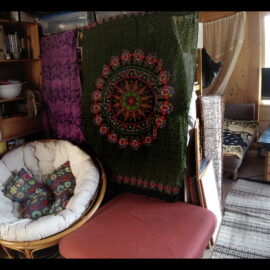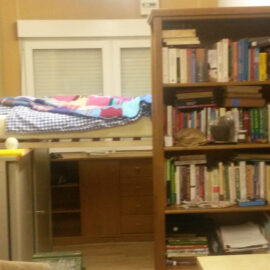
Everyone says that building a house is exhausting and costs a lot of time and money. And yet probably everyone underestimates it. And above all: it doesn’t matter how small or big the house is. The cost is almost always higher.
I wanted to reflect on the progress of my house building project much earlier, but it wasn’t meant to be. For several months now, the outer shell has been sufficiently finished to be weatherproof. Cosmetically, however, there are still a few things missing. And inside, everything is progressing more slowly than expected. Even though there really isn’t much missing any more.
So since it’s a bit fluid when I can actually say that the house is finished, here’s a first part of a reflection on what I’ve learned and where I could have a deeper look into things.
Extension vs. new build
It is much more complicated to add something to an existing house than to simply tear it down and build a new one. This is certainly also the reason why it is done so rarely these days. It takes more time, more money and, above all, much more specialist knowledge and creative skills to find special, unique solutions to ever-changing problems.
Another factor is that very few houses today are built in such a way that they can be easily adapted, reduced or enlarged. And it’s not easy to find people or companies with such a wide range of expertise who are actually able and willing to take on such a complex project.

Living on a construction site
As I moved into my half-finished house some time before the start of the extension, I also had the particular challenge of living on a building site. Having all my belongings in a building that had only a tarp as rain protection for several months was quite emotionally challenging.
In addition, the roof was constructed in such a way that it basically consisted of two indentations, which became two ponds with the help of the tarp as soon as it rained. In the indentations, the tarp was weighted down with heavy pieces of wood to stabilize it even in windy conditions. However, this meant that there was always the worry that holes would be torn in the tarp by the wind, which, combined with the pond situation, always gave me a queasy feeling when it rained.
Over time, however, I had developed at least a reasonably well-functioning drainage system for the roof. Nevertheless, there was a lot of inner uncertainty for months, both in windy and rainy weather.
In addition, there was always the worry that somewhere, some screw, wall or roof construction would not behave as planned and parts of the house or even everything would somehow collapse.
Do it yourself vs. commission it
If you commission a house build instead of building it yourself, you have to put a lot of thought into the planning, but then you let everything go and come back when the work is done. The disadvantage of this is that you may only realize too late that something has been implemented incorrectly or that you may want it differently.
When you do it yourself, or at least help out, you run into completely different challenges.
My biggest challenge when helping out myself was trying to fulfill two roles at the same time. On the one hand, I was the construction site organizer, had to coordinate crane drivers, food supplies and people, while also having to make various last-minute decisions.
On the other hand, I had already counted myself in as an auxiliary worker and was also curious and wanted to be present at every step of the work to learn how it was done, or at least to get a feel for how it worked in detail. Quite apart from the fact that I wanted to document as much as possible with photos and film.

Especially learning about building was one of the reasons I decided to work on the construction myself. Another was that I wanted to build a closer relationship with my home, which I definitely managed to do, even if I didn’t see every move.
In addition, most of the other people who helped build the house were friends and acquaintances, which means that I can remember them and the time we spent together with a smile at almost every part of the house.
What is perfection?
Due to the somewhat “creative” addition and the originally very special construction, which was built as a group of amateurs (with professional instructions), my house is far from conforming to a typical ideal or image of perfection. But for me, the way my home was created is so perfectly imperfect that it suits me absolutely perfectly.
What happens next?
Once the rough part of the construction is done, it’s easy to think that it will soon be finished. All the other smaller, more inconspicuous steps are usually much more work and take twice as long, if not longer. There will therefore be more reports until completion.
And if there are certain areas that you are particularly interested in and would like to know more about, feel free to write to me in the comments. This also helps me to get a clearer focus in my writing.



